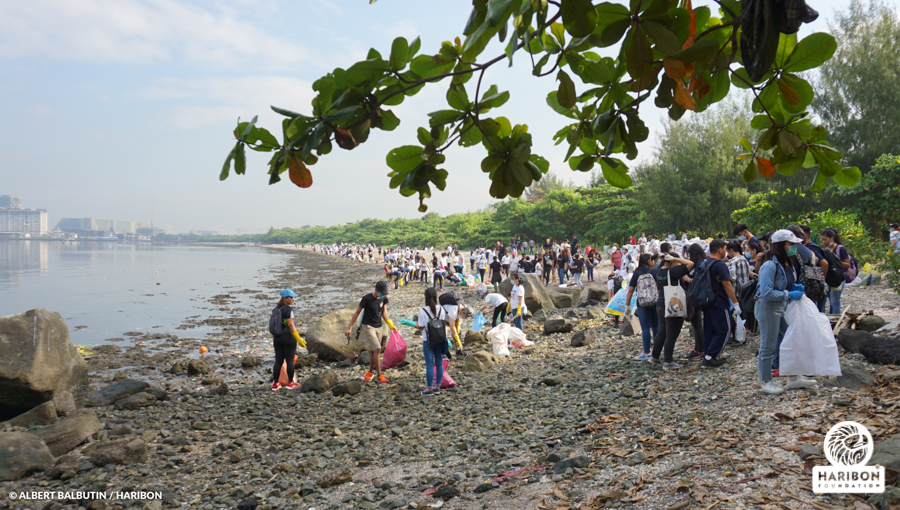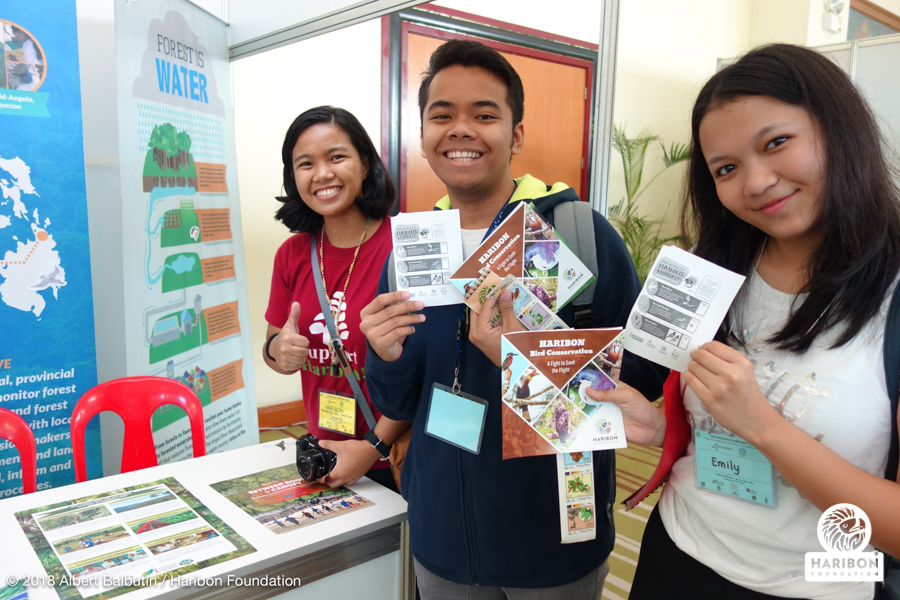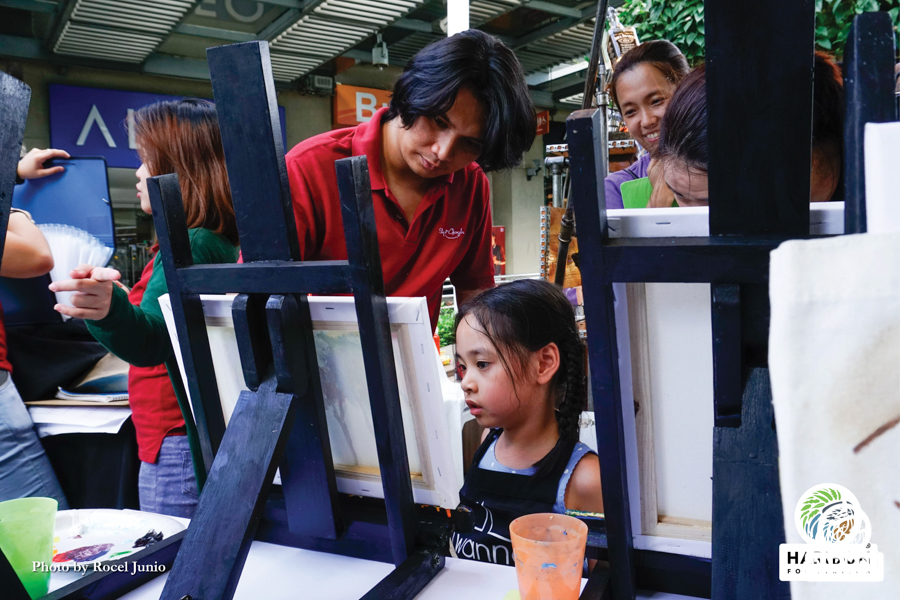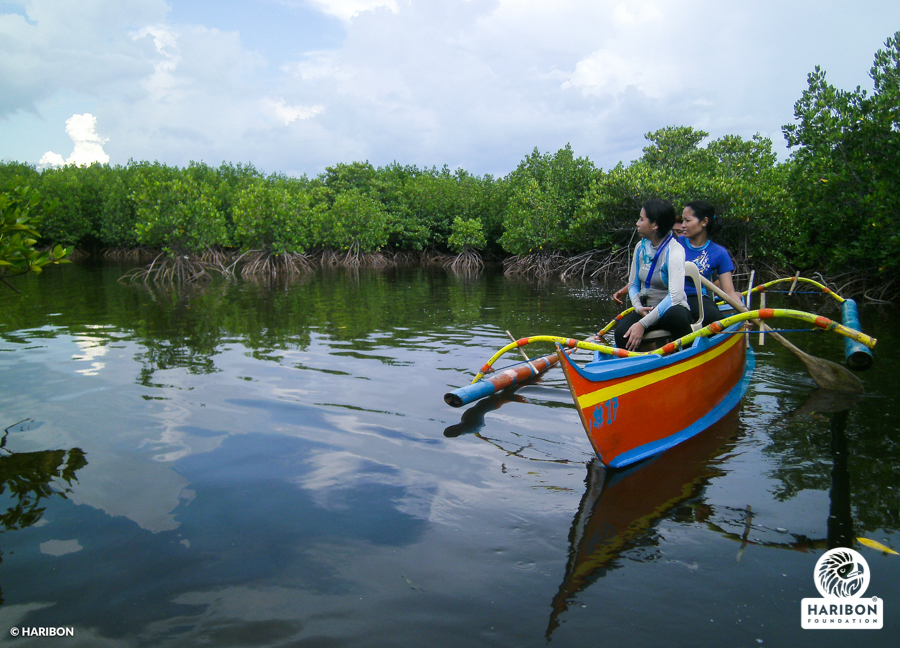By Albert Balbutin, Haribon Member.
Want to help the environment?
Helping an organization is one of the best ways you can start. But why join a group in the first place?
Joining an existing group means you will be joining people who not only think like you, but have also worked some time for the cause. You can help them out while learning from their experiences, while cleaning up a beach, planting a tree, or raising awareness through campaigns online and on the street.
You can do all this while sharing your time, energy, skills, or passion for the environment.
4 simple ways
Organizations can be intimidating at first, but like all advocacy groups, they are always in need of assistance. You don’t have to be a scientist, an environmental lawyer, or a diplomat to make an impact. (If you are, or know someone who is, that helps too.)
Here are four ways you can help an environment organization:
- Attend an event.
- Volunteer your skill.
- Ask about current or upcoming projects.
- Provide long-term support.
1. ATTEND AN EVENT
Organizations hold different kinds of events. Trainings, seminars, fundraisers, clean-ups, plantings, birdwatching… and more. Inquire with your local NGO or non-profit on what kinds of events they hold, or will hold. And then ask to attend the event.
Some events might have fees, others may not. Either way, your donation and/or presence helps the organization.
If certain training events or seminars are catered to a specific audience (like local stakeholders, or government officials), offer your help in setting up, or in documentation (photo, video, or minute-taking). This is also an easy way to get to know an organization, its staff, and/or its members.
Tip: Introduce yourself to staff and members at events and simply ask the question, “how can I help?” Purchase merchandise or food at these events that are offered by the organization. This gives you a chance to chat with organizers and get to know more people, while you support them with donations.
2. VOLUNTEER YOUR SKILL
Offering something you already do, or are studying, is a good place to start.
STUDENTS
If you are a student, volunteer for your school’s environmental organization. Now is a good time to start your life-long dedication for the environment by establishing friendships with like-minded youth, and meeting environmental experts in your school. Apply what you learn in the classroom by exercising them as a volunteer. Student-led organizations are easier to join because one of their goals is usually to cultivate the budding skills of fellow students.
Tip: Don’t have an environmental organization in your school? Find a group of like-minded students and start a small meet-up of nature-lovers. Organize simple activities like nature walks, film-screenings, clean-ups, and more. If sustained, consider making it into an official student organization and leave a legacy at your school.
PROFESSIONALS
If you are a young or veteran professional, it is never too late to start. You already know what people are willing to pay you to do. Now apply it with an environmental organization you’ve always wanted to support.
Send an email (or attend an event as noted above), and indicate that you would like to offer your services for free or “pro-bono”. You already know how much time it takes you to do what you do best, and simply allot some time (perhaps over the weekends, or a few hours in the evening or morning) to dedicate it to the environment.
Even better, schedule a meeting with the Human Resources or Recruitment department of the organization to get a better idea of how you can apply your skill with the organization. Remember: it is up to you how much time you can devote. Because you are giving it for free, it is up to you to decide when and for how long you’d like to offer your skill.
Tip: Smaller organizations might not have the staff specialized in entertaining inquiries, so they may be intimidated by you. Assure them that you want to help because you appreciate what they do, and do your best and take initiative to make their jobs easier. And whenever possible, don’t get in their way! Have a CV ready with a cover letter indicating your intent to help and why. This will help staff feel more comfortable working with you.
If your company has a Corporate Social Responsibility program, have your HR department contact an environment organization.
3. ASK ABOUT CURRENT OR UPCOMING PROJECTS
Every organization is different. Some focus on marine life, others on waste management. Some projects are seasonal, like tree plantings in the Philippines where survival rates are higher during the rainy season.
Regardless of the focus, inquire about an organization’s projects and when they will occur. This way you can identify and schedule your assistance.
4. PROVIDE LONG-TERM SUPPORT ON AN ANNUAL OR MONTHLY BASIS.
If the organization accepts members, become a member. And almost all organizations accept recurring donations.
Instead of buying coffee every Tuesday morning, dedicate that money to an organization and give it on a monthly basis. If the organization does not have a credit card system or online payment portal, send a check every month. Or put a small amount of money aside in an envelope, a jar, or savings account every month, and then donate the entire amount to the organization at the end of the year.
If you’ve already taken steps 1 to 3 above, you can already identify how you can help in the long term. You can write an article every 6 months. Help with their social media accounts every Christmas. Volunteer for the organization’s annual General Assembly or clean-up drive. Make an annual family tree-planting a long tradition. How many forests can your family plant in a generation?
Providing longer-term assistance shows staff that there are people in the world who believe in their cause. But most importantly, it strengthens your relationship with the organization and what they do.
This simply means you can now be truly “invested” in supporting our environment in the long-term. And who knows, maybe you’ll adjust your career a bit and work for an organization full or part time.
TIME TO ACT
By no means are you limited to these four actions. I’m sure you’ve seen similar suggestions in many lists already! The question is, why haven’t you started?
The sky’s the limit on how you can help, so there is no reason why you cannot start now. Don’t think you have the time? If you’ve read this far and already see the problems and issues that our planet is facing, I guess a 5th way to help is to acknowledge that you can make time to help.
To start, here is a short list of different local and international organizations you can help.
LIST OF LOCAL ORGANIZATIONS WITH MEMBERSHIPS
- Biodiversity Conservation Society of the Philippines
- Haribon Foundation
- Philippine Native Plants Conservation Society, Inc
LOCAL ORGANIZATIONS YOU CAN JOIN AS A VOLUNTEER
- Alternative Law Groups
- Alyansa Tigil Mina
- Break Free From Plastic
- Earth Island Institute Philippines
- Ecowaste Coalition
- Green Convergence
- Mabuwaya Foundation
- Marine Wildlife Watch of the Philippines
- Mindoro Biodiversity Conservation Foundation, Inc.
- Philippines Biodiversity Conservation Foundation, Inc.
- Plastic Free Bohol
- Save Philippine Seas
- Save Sierra Madre Network
LOCAL GOVERNMENT ORGANIZATIONS (IF YOU ARE A STUDENT, INQUIRE ABOUT INTERNSHIPS)
- Department of Environment and Natural Resources (DENR)
- DENR – BMB (Biodiversity Management Bureau)
- National Commission on Indigenous Peoples (NCIP)
INTERNATIONAL ORGANIZATIONS
- International Union for Conservation of Nature (IUCN)
- World Wildlife Fund (WWF)
- Greenpeace
- Conservation International
- Rare
FACEBOOK GROUPS
Be the change you want to see, but it starts with “WE”. Join an organization today!





